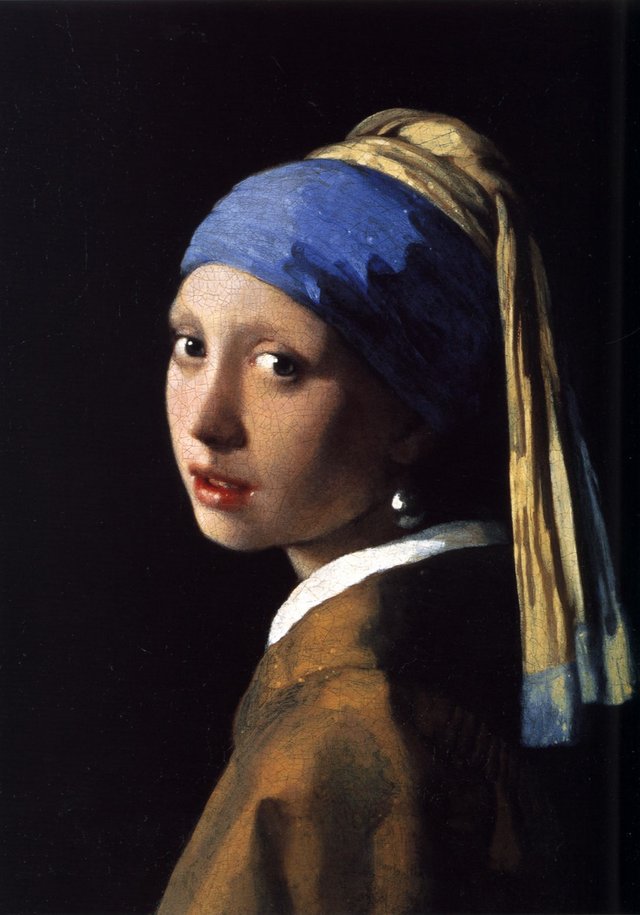[ART HISTORY] Girl with a Pearl Earring (ca. 1665) by Johannes Vermeer 🎨
Against a dark, neutral, almost black background, a young girl turns her face to the beholder. The head is slightly forward-leaning. Even though her eyes are fixed on the viewer, she gives the impression of being deeply immersed in thought. The mouth with its moist lips is half open, as if she's about to talk to the spectator. A strong sense of presence and immediacy arises. The girl is wearing a simple jacket without decorations. The collar is bright white in stark contrast to the yellow-brown jacket. The blue turban with a light yellow knot holds together a scarf that softly falls over the girl's shoulders. Vermeer has worked with simple brush strokes and reduced the tonality so that shadow-like pigments finish the headscarf at the bottom.

The turban gives an almost exotic impression. During the 1400s, the turban was a popular fashion accessory, which can also be seen in Johannes van Eyck's supposed self-portrait. During the Turkish war, people became fascinated by the foreign lifestyle and exotic clothes. The enemies of Christianity were not only scary, but also fascinating and exciting! Particularly prominent is the earring, the large drip-shaped pearl, which emerges from the shadow by the girl's throat. Most art historians agree that the pearl earring is a symbol of chastity. This is reinforced by the words of the French mystic St Francis De Sales (1567-1622):
"Both now and in the past it has been customary for women to hang pearls from their ears; as Pliny observed, they gain pleasure from the sensation of the swinging pearls touching them. But I know that God's friend, Isaac, sent earrings to chaste Rebecca as a first token of his love. This leads me to think that this jewel has a spiritual meaning, namely that the first part of the body that a man wants, and which a woman must loyally protect, is the ear; no word or sound should enter it other than the sweet sound of chaste words, which are the oriental pearls of the gospel."
It's very likely that Vermeer used an instrument called Camera Obscura; a dark room with a little hole in the wall that projects an inverted image on the surface opposite to the opening. This certainly contributes to the feeling that it's a fleeting moment that is being captured.
You'll have to go to Titian or perhaps Correggio to find similar softness, sensuality and luminosity in a portrait. It's hard to tell whether it's night or day. I never tire of getting lost in her slightly enlarged eyes with their sensual chastity and her enigmatic and yearning gaze. We know nothing about the model and almost as little about her painter. A lot of research was needed in order to identify thirty-five paintings by Vermeer. We know that he was born in 1632, 26 years after Rembrandt, in Delft, in the then Dutch Republic. We can only guess about his personality and his existence. Were it not for English painter and critic Joshua Reynolds (1723-1792) and French critic Théophile Thoré (1807-1869), Vermeer would be largely forgotten. Twenty little female portraits and interiors, a few conversation pieces and two landscapes were enough to place him aside the greatest painters of all time.

impressive writing style, very elaborate
'she looks sad' is how I describe this, yours is probably better
I appreciate it, thanks! It's interesting how different we can view a facial expression. Perhaps it's mirroring our own disposition.
great to post...i like it.
Glad you like it, thanks!
This is so well done! Thank you for posting
Thank you for reading!
I want to see Vermeer's "Girl with a pearl necklace," amiright!
Here you go :)
So hot
Great post!